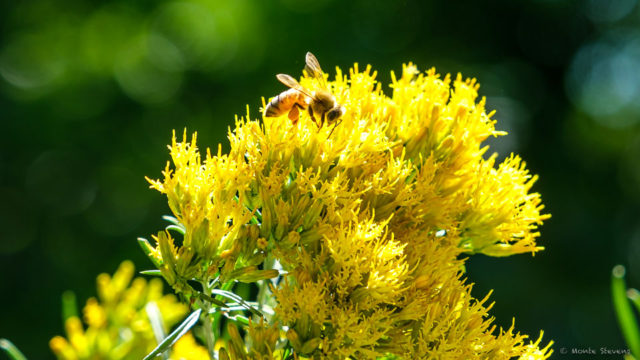Rubber rabbitbrush occurs in the cold deserts of the Colorado Plateau, throughout much of the Great Basin, and in warm deserts of the Southwest from lower-elevation Sonoran to subalpine zones. Rubber rabbitbrush favors sunny, open sites throughout a wide variety of habitats including open plains, valleys, drainage ways, foothills, and mountains. It is particularly common on disturbed sites. Rubber rabbitbrush is cold hardy, and tolerant of both moisture and salt stress. There are several plants along the edge of my ponds between the grass and pond. They attract a wide array of native insects, including butterflies and small bees. It is one the few native plant species in the Intermountain West that provides habitat for pollinators during the late summer and fall months. Love the bright colored yellow that makes them stand out. In general, wildlife and livestock forage only lightly on this species during the summer, but winter use can be heavy in some locations. Fall use is variable, but flowers are often used by wildlife and livestock. A few leaves and the more tender stems may also be used. Surprisingly rabbits seldom dine on them except in winter but love to hide in them.
